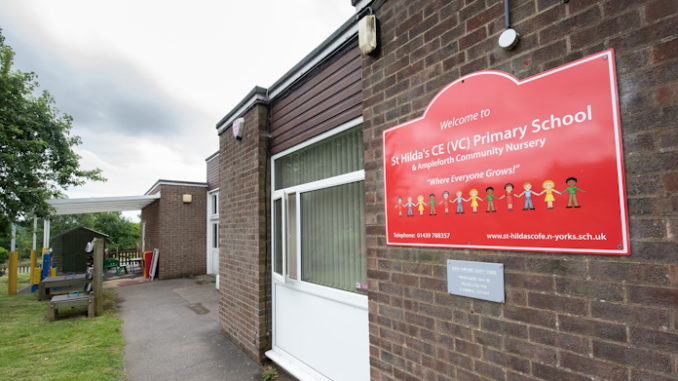
A local education authority which has repeatedly been accused of failing to protect small rural schools from closure has advised the 11th closure of a primary in five years would help ensure “children are provided with the best education”.
Leading members of North Yorkshire Council will be told on Tuesday that despite scores of Ampleforth residents appealing for the village’s struggling St Hilda’s Church of England Primary School to be given time and resources to get back on its feet, the school should close after the summer term.
The decision follows numerous concerted and community-based campaigns to rescue schools in the county, which has more small rural schools than anywhere else in England, ultimately being rejected by the council.
It comes just weeks after the council decided Fountains Earth Primary in Nidderdale should be closed in the face of a petition of 1,100 signatures against the move.
The council’s leadership has repeatedly emphasised its dismay over the closure of rural schools and due to Department of Education rules has been left unable to reverse proposals once given momentum by school governors.
While North Yorkshire’s primary schools are placed 31st out of 150 local authorities in terms of funding per pupil, it is understood a falling birth rate combined with changing demographics means that a number of small schools
are facing financial challenges associated with low, or fluctuating, numbers on roll.
An officer’s report to the council’s executive states governors of St Hilda’s brought forward a proposal to consult on the closure due to pupil numbers falling to 13, an expected reception intake of no pupils in September and resultant deficits.
It states while a consultation saw residents underline the importance of the school to the community and that closing it would be short-sighted given expected housebuilding in the village.
In addition, the school’s parents’ association submitted a document making
a detailed case against closure, including that the Department for Education expects all decision-makers to adopt a presumption against the closure of rural schools.
In response, the officer’s report states statutory guidance is that the case for closure should be strong and clearly in the best interests of educational provision in the area.
The report adds while 41 new properties have been built in Ampleforth since 2013 and could have been expected to bring the need for up to ten additional primary school places, the combined roll of the two primary schools in the village had fallen from 128 to 87.
Responding to claims the school’s leadership had been poor and had played a part in lower numbers at the school, the report states each of the three Ofsted inspections since 2011 had rated the school’s leadership as ‘good’.
The council’s assistant director for education and skills, Amanda Newbold, said: “It is clear from the responses from local residents and parents that there is a lot of support for St Hilda’s Church of England Primary School and it holds a special place within the community.
“However, low pupil numbers can make it challenging for a school to operate within its budget as well as maintaining a high quality provision, teaching and learning.”
Ampleforth division councillor Steve Mason said while the authority had repeatedly pointed the finger of blame towards the Department of Education over funding and its rules leaving them no leeway, it was within the gift of the council’s executive to put in measures to protect schools.
He said while housing developments were being planned for villages in the coming years community facilities were disappearing at an alarming rate.
Coun Mason said: “There doesn’t appear to be any strategic thinking at all. We will be dropping pupils into villages and expecting home to school transport to pay the extra money.”


Be the first to comment